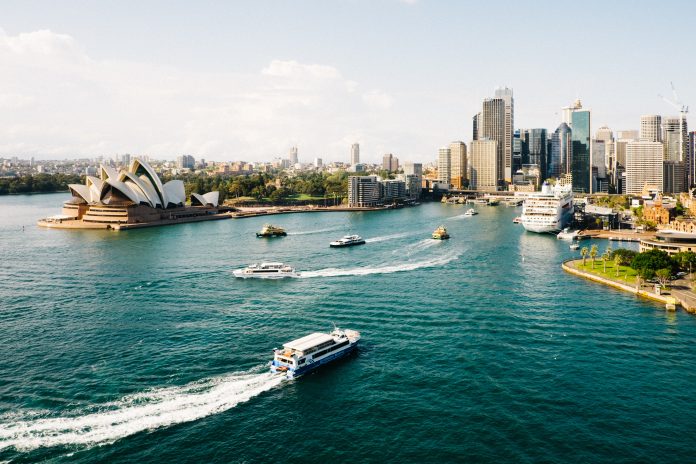The Australian cannabis market is one of the largest, fastest-growing and most robust medical industries outside North America.
Australia’s market strength is multifaceted and as vast as its enormous country.
Each state may treat cannabis differently, but an Aussie tour through the many pharmacies, dispensaries, and clinics demonstrate the inherent strength of patient desires and cannabis entrepreneurial creativity.
New Australian GMP and GACP cannabis standards rock the boat
As of July 1, 2023, all Australian medical cannabis products must conform to new Therapeutic Goods Administration (TGA) guidelines, which require flower and extracts to be produced under pharmaceutical good manufacturing practice (GMP) procedures.
The World Health Organization (WHO) established requirements for adherence to the highest standards to protect consumers and reign in quality standards of medicinal products.
Before this change, many distributors took in good agricultural and collecting practices (GACP) stock from countries like Canada, as GACP helps ensure adherence to GMP standards.
However, most pharmacies were reluctant to stock these products — despite knowing the change would occur for over two years — leading to shortages and confusion.
Many extract suppliers who were not GMP active pharmaceutical ingredient (API) producers nor GMP manufacturing certified were also negatively impacted.
How does the Australian medical cannabis industry work?
Australia is mainly an import market. Only a few cannabis flower strains were relabelled with importer branding in the early days.
Today, the selection looks like an adult-use market, with almost all the beloved, well-known cultivars finding their way onto pharmacy menus.
Unlike magistral markets like Germany, extracts come in various final dosage forms, from drops, sprays, and gel caps to vaporizers and edibles.
While Australia is still a very young market, the foundation of an advanced market that understands patients want variety and reasonable pricing has already been laid.
Australia is a patient-centred medical cannabis market
Patient access is one of the biggest driving forces for the Australian cannabis market. Unlike stigmatized European cultures with little to no doctor education, Australian general practitioners (GPs), clinics and pharmacies pride themselves on openly discussing and collaborating on best practices for cannabis.
Additionally, rather than limiting indications of use to severe ailments like multiple sclerosis, epilepsy, stage 3 cancer, or pain categories, Australian GPs have embraced the vast indications people are treated for in mature countries in the United States and Canada, like stress, anxiety, sleep or whatever comfort cannabis provides to various patients.
Giving GPs and specialised clinics the flexibility to diagnose and treat people as they see fit between the doctor and patient is a freedom all countries should embrace.
Other benefits like reduced costs and streamlined distribution increase the patient’s desire to move from an illicit market purchase to a higher-quality pharmacy or dispensary.
Much like the U.S., early dispensaries are run by pharmacists that specialise in various cannabis products and even provide doctorly advice.
This hybrid medical-recreational model allows trained pharmacists to freely teach and advise patients who are unhappy with their current treatments, want to fix something and seek the know-how of dedicated professionals.
Have no doubt that Australia is a medical market, and confidence and education increase by providing access through general practitioners and passionate pharmacists.
While this model may feel liberal because of the product selection, it is a true pharmaceutical market with a much-needed wider choice for patients.
I applaud Australia’s demolition of the one-size-fits-all pharmaceutical cannabis model.
Australian cannabis patients still have a few access hurdles
There is still much more progress to go. Stringent driving rules prevent patients from using cannabis and operating a vehicle because cannabis is in the system long after the effects have subsided.
Although it is a good cause to avoid dangerous driving, current intoxication-detecting aids do not measure impairment but simply presence.
Fear of prosecution has driven patients to pure CBD isolate products and deprived many of the opportunity to treat themselves with a better alternative.
Additional issues revolve around regional rules that have slowed patient ability to get treatment and purchase products conveniently.
Additionally, high, persistent costs for patients — frustrating when the products are not always available or of consistent quality — drive them toward illicit market procurement.
Medical cannabis in Australia models patient prioritisation to world
Australia is one of the few bigger emerging medical countries that continues to grow and may be estimated closer to $300 million AUS outpacing Germany and Israel in growth and volume.
It should be no surprise that increased access and better pricing drive patients towards quality legal alternatives.
Giving patients a variety of treatments and choices allows them to better assess their progress than being told, “You have one choice only; take it.”
Australia has all the signs of continuing a successful cannabis program.
Historically, in numerous instances, only a few big pharma treatments were available that often did more harm than good.
The program will only become increasingly education-centred while helping more people find cannabis solutions for indications they always wanted to mitigate.
More emerging cannabis countries should be looking at Australia’s successful cannabis quality and patient access market.


